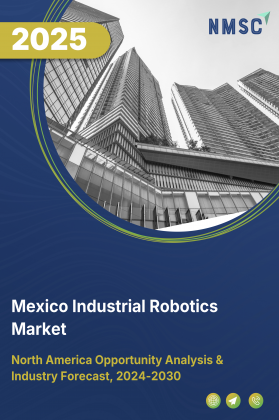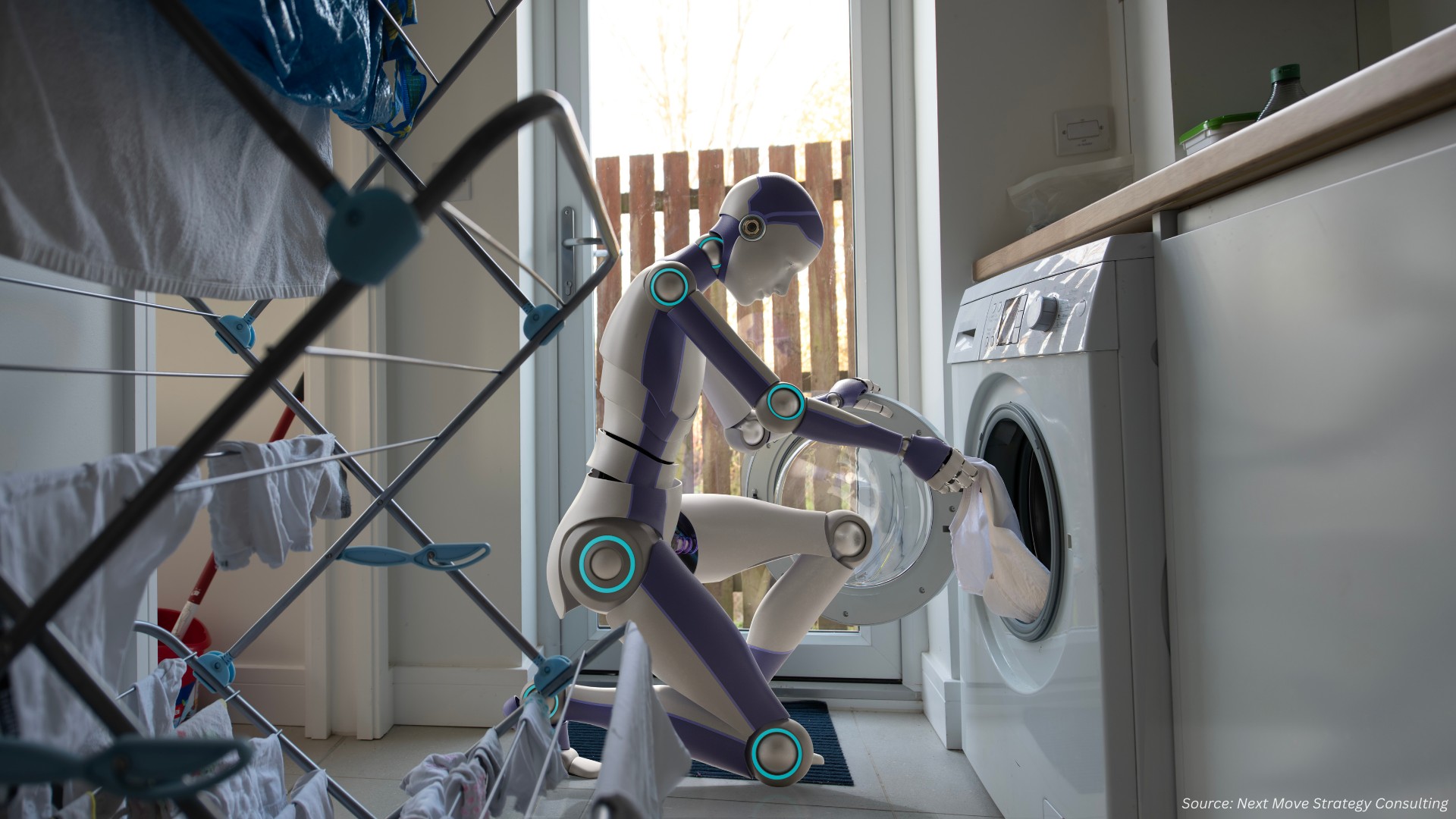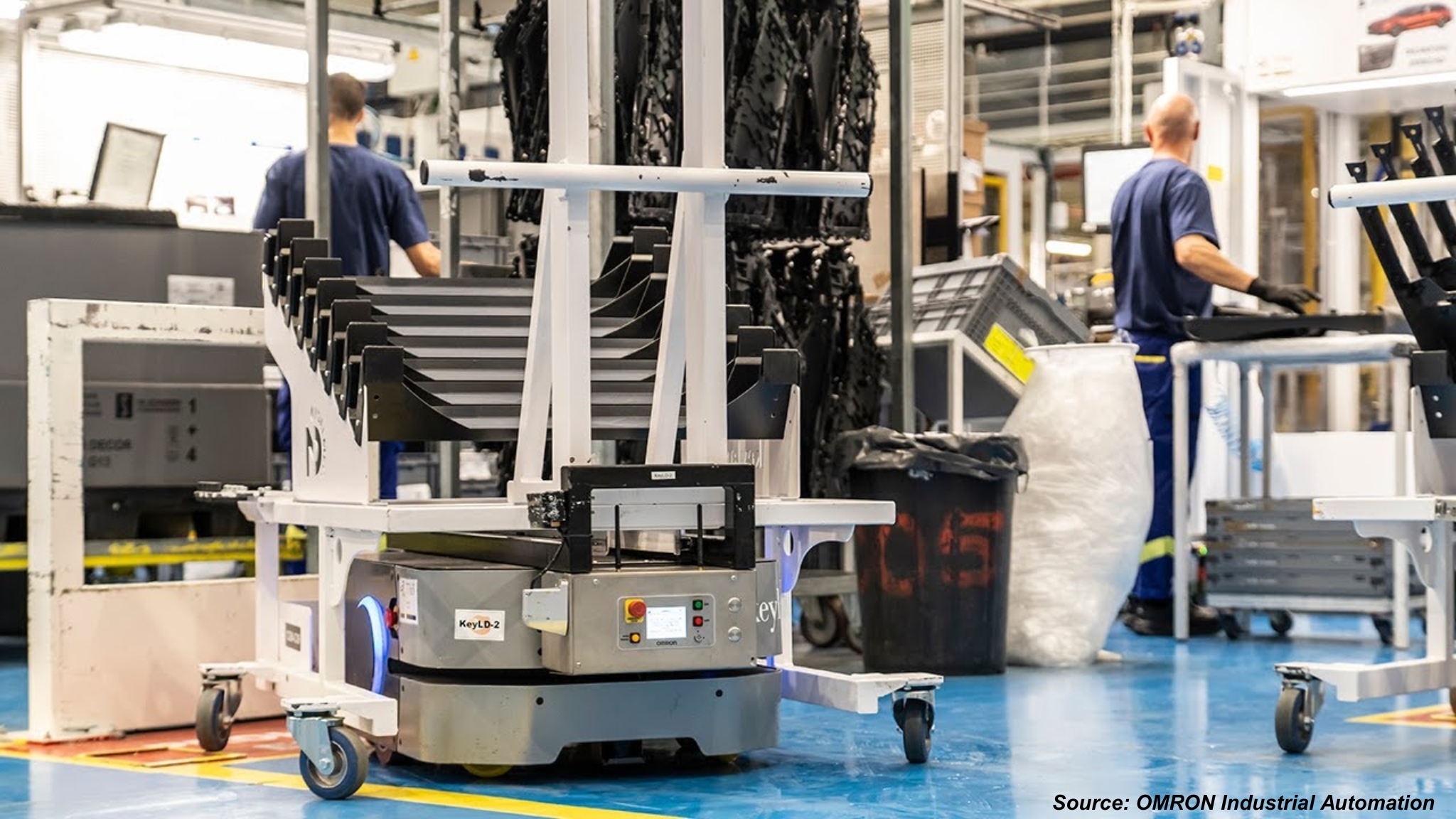
Middle East Industrial Robotics Market By Type (Articulated Robots, SCARA Robots, Cylindrical Robots and Others), By Offering Hardware, and Services), By Payload Capacity (≤ 100 KG, 101-200 KG, 201-500 KG and Others), By Mobility (Stationary, and Mobile Robots), By Mounting Type (Floor mounted, and Others), By Application (Material Handling, Assembling & Disassembling, and Others), By Industry Vertical (Automotive, and Others) – Opportunity Analysis and Industry Forecast, 2025–2030
Industry: Semiconductor & Electronics | Publish Date: 25-Nov-2025 | No of Pages: 338 | No. of Tables: 292 | No. of Figures: 237 | Format: PDF | Report Code : SE3724
Industry Outlook
The Middle East Industrial Robotics Market size was valued at USD 612.5 million in 2024 and is expected to reach USD 721.5 million by 2025. Looking ahead, the industry is projected to expand significantly, reaching USD 1279.5 million by 2030, registering a CAGR of 12.1% from 2025 to 2030. In terms of volume, the market recorded 7 thousand units in 2024, with forecasts indicating growth to 9 thousand units by 2025 and further to 19 thousand units by 2030, reflecting a CAGR of 16.3% over the same period.
The industrial robotics market in the Middle East is experiencing significant growth, driven by the rapid expansion of manufacturing and oil & gas sectors, increasing adoption of advanced technologies, and government-backed smart manufacturing initiatives such as Saudi Arabia’s Vision 2030 and the UAE’s National Industry Strategy.
Industrial robots, including collaborative robots (cobots) and AI and IoT-enabled systems, are enhancing operational efficiency, enabling real-time monitoring, predictive maintenance, and data-driven decision-making across industries such as manufacturing, automotive, and oil & gas.
IoT integration further supports productivity improvements, energy efficiency, and process optimization, accelerating robotics adoption in the region. However, high implementation costs and a shortage of skilled personnel remain key restraints, limiting scalability and slowing adoption despite the growing demand for automation and Industry 4.0 practices.
Expansion of Manufacturing and Oil & Gas Sectors are Driving Industrial Robotics Demand
The Middle East industrial robotics market demand is being driven by the rapid growth of manufacturing industries and the region’s strong focus on the oil & gas sector. Countries like Saudi Arabia, the UAE, and Qatar are investing heavily in modernising production facilities to improve efficiency, reduce labor costs, and ensure consistent quality.
Articulated robots are increasingly deployed for tasks such as assembly, welding, painting, and material handling, enabling manufacturers to streamline operations and enhance productivity. The growing demand for automation in high-volume and precision-intensive industries is making industrial robots a critical component of the region’s industrial development.
Adoption of Advanced Technologies and Smart Manufacturing Initiatives are Accelerating Market Growth
The integration of advanced technologies, including artificial intelligence (AI), Internet of Things (IoT), and collaborative robotics, is accelerating robotics adoption across the Middle East. Smart manufacturing initiatives, supported by government programs like Saudi Arabia’s Vision 2030 and UAE’s National Industry Strategy, promote Industry 4.0 practices and automation investments.
IoT-enabled industrial robots facilitate real-time monitoring, predictive maintenance, and data-driven decision-making, improving operational efficiency and reducing downtime. These technological advancements allow manufacturers to optimize production, reduce costs, and enhance competitiveness, driving further adoption of delta robots across the region.
High Implementation Costs and Skilled Workforce Shortages are Hindering Robotics Adoption
The Middle East industrial robotics market growth is restrained by high implementation costs and a shortage of skilled personnel. Advanced industrial robots, including collaborative robots (cobots) and AI-enabled systems, require significant upfront investment, which can be a barrier for small and medium-sized enterprises (SMEs) and even some large manufacturers.
Additionally, operating and maintaining these systems demands specialized technical expertise, which is limited in the region. These financial and workforce challenges can slow the adoption and scalability of industrial robots, despite rising demand for automation across key industries such as manufacturing, automotive, and oil & gas.
IoT Integration Unlocking Future Opportunities in the Middle East Industrial Robotics Market Share
The integration of Internet of Things (IoT) technology is emerging as a key future growth driver for the Middle East industrial robotics market trends. IoT-enabled robotic systems enable real-time monitoring, predictive maintenance, and intelligent process optimization, allowing manufacturers to streamline production, track equipment performance, and minimize downtime. Leveraging data from connected sensors and analytics enhances operational efficiency, reduces costs, and improves production flexibility.
This creates opportunities for the adoption of advanced robotics across sectors such as automotive, electronics, oil & gas, and food processing, strengthening the region’s industrial competitiveness and supporting its transition toward smart manufacturing and Industry 4.0 practices.
Competitive Landscape
The Middle East industrial robotics industry is highly competitive, led by major players such as ABB Ltd., Fanuc Corporation, Yamaha Motor Co., Ltd, Mitsubishi Electric Corporation, KUKA AG, Rockwell Automation, Siemens AG, Panasonic Corporation, Omron Corporation, Seiko Epson Corporation, Staubli International AG, SMARTSHIFT Robotics, and EVS TECH Co., Ltd.
These companies are driving technological advancements by introducing AI- and IoT-enabled industrial robots, including collaborative robots (cobots) and autonomous mobile robots (AMRs). Their innovations are accelerating automation adoption across key Middle Eastern industries, including manufacturing, automotive, electronics, and oil & gas, enhancing production efficiency, operational agility, and strengthening the region’s competitiveness in smart manufacturing and Industry 4.0.
Middle East Industrial Robotics Market Key Segments
By Type
-
Articulated Robots
-
SCARA Robots
-
Cylindrical Robots
-
Cartesian/Linear Robots
-
Parallel Robots
-
Collaborative Robots
-
Autonomous Mobile Robots (AMRs)
-
Automated Guided Vehicles (AGVs)
-
Other Robots
By Offering
-
Hardware
-
Software
-
Robot Control Software
-
Vision & Perception Software
-
Other Software
-
-
Services
By Payload Capacity
-
≤ 100 KG
-
101-200 KG
-
201-500 KG
-
501-1000 KG
-
1001-2000 KG
-
2001-5000KG
-
More than 5000 KG
By Mobility
-
Stationary Robots
-
Mobile Robots
-
By Mounting Type
-
Floor-mounted
-
Wall-mounted
-
Ceiling-mounted
-
Rail-mounted
By Application
-
Material Handling
-
Assembling & Disassembling
-
Processing
-
Cleanroom
-
Dispensing
-
Welding and Soldering
-
Pick and Place
-
Others
By Industry Vertical
-
Automotive
-
Semiconductor & Electronics
-
Plastic and Chemical Products
-
Metal and Machinery
-
Logistics
-
Food & Beverages
-
Healthcare & Pharmaceutical
-
Others
Key Players
-
Yaskawa Electric Corporation
-
Mitsubishi Electric Corporation
-
KUKA AG
-
Kawasaki Heavy Industries
-
Nachi-Fujikoshi Corp.
-
Denso Wave Inc.
-
Panasonic Corporation
-
Rockwell automation
-
Omron Corporation
-
Seiko Epson Corporation
-
Staubli International AG
-
Seimens AG
-
Carl Cloos Schweisstechnik GmbH
Report Scope and Segmentation
|
Parameters |
Details |
|
Market Size in 2025 |
USD 721.5 Million |
|
Revenue Forecast in 2030 |
USD 1279.5 Million |
|
Growth Rate |
CAGR of 12.1% from 2025 to 2030 |
|
Market Volume in 2025 |
9 thousand units |
|
Volume Forecast in 2030 |
19 thousand units |
|
Growth Rate |
CAGR of 16.3% from 2025 to 2030 |
|
Analysis Period |
2024–2030 |
|
Base Year Considered |
2024 |
|
Forecast Period |
2025–2030 |
|
Market Size Estimation |
Million (USD) |
|
Growth Factors |
|
|
Companies Profiled |
15 |
|
Market Share |
Available for 10 companies |
|
Customization Scope |
Free customization (equivalent up to 80 working hours of analysts) after purchase. Addition or alteration to country, regional, and segment scope. |
|
Pricing and Purchase Options |
Avail customized purchase options to meet your exact research needs. |

















 Speak to Our Analyst
Speak to Our Analyst

























